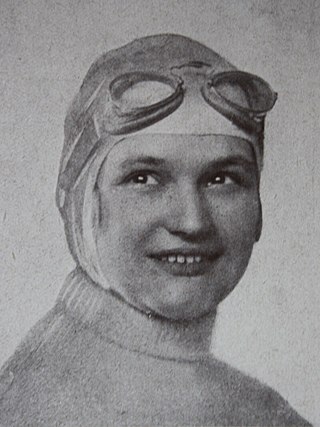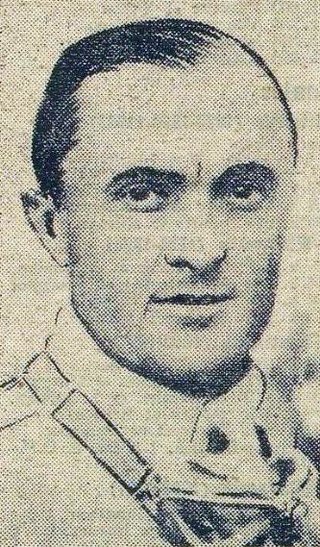Report
Competitors were divided into four classes based on engine capacity. Class I were the up to 1100cc cyclecars, Class II was for cars up to 1500cc, Class III for cars up to 2000cc, and Class IV for cars over 2000cc. [1]
Cars started the race individually in order of race number, with a three minute interval between each car starting with class II, then class III, class IV and finally the class I competitors who only needed to complete 3 laps. [1]
During his first lap, 2-time Targa Florio winner Giulio Masetti's Delage overturned, severely injuring him. He died shortly afterwards. [1]
The main race was dominated by Meo Costantini's Bugatti, who lead from the start and never lost the lead, setting a fastest lap of 1 hour and 26 minutes on his fifth and final lap. Behind him, fellow factory Bugatti driver Ferdinando Minoia drove to a mostly unchallenged second place. Behind them the race was much closer. After the first lap, third to eighth place were separated by less than two minutes, with Emilio Materassi's Itala Special in third followed by Wagner, Dubonnet, Divo, Goux and Maserati. Dubonnet and Goux charged up the order on the second lap, moving up to third and fourth places respectively, making it a Bugatti 1-2-3-4, while Materassi dropped to sixth due to a pit stop. By the end of lap three, Materassi had pushed back up to third place, while Dubonnet had dropped to seventh as he made a pitstop. [1]
Factory Delage drivers Divo and Benoist would then retire, mourning the loss of teammate Masetti. Goux was able to pass Materassi on the fourth lap, giving the Bugatti factory team a 1-2-3 which they would hold until the end, with Materassi finishing fourth, while Dubonnet was fifth, and first in Class II. After setbacks which dropped him as low as 12th, Maserati finished 8th and won Class III. [1]

Eliška Junková-Khásová, also known as Elisabeth Junek, was a Czechoslovak automobile racer. She is regarded as one of the most significant drivers in Grand Prix motor racing history, and was the first woman to win a Grand Prix event.

Baconin Borzacchini was an Italian racing driver who often competed under the nom de courseMario Umberto Borzacchini.

The Circuito Lasarte was an 17.749 km (11.029 mi) Grand Prix motor racing road course at Lasarte-Oria, Gipuzkoa, Spain in the Basque Country near the city of San Sebastián on the Bay of Biscay. The counterclockwise layout was used between 1923 and 1935 but racing ended with the eruption of the Spanish Civil War in 1936 and after the war auto racing resumed at new tracks near Barcelona.

Emilio Materassi was an Italian Grand Prix motor racing driver.

The 1931 Grand Prix season was a watershed year, with the advent of the AIACR European Championship. After several years of Grand Prix racing in the doldrums with little technical development, 1931 saw new models come from all three main manufacturers: Bugatti, Maserati and Alfa Romeo.

The 1932 Grand Prix season marked the second year of the AIACR European Championship. It saw the debut of Alfa Romeo's sensational new Tipo B and with it, Tazio Nuvolari won the Championship driving for the Alfa Corse works team. The 40-year old Nuvolari won two of the three rounds and was second in the other. Still running to a Formula Libre rules for the cars, the regulations were revised to set the races to be between five and ten hours. However, all three national committees ran their races to the minimum time-limit.

The 1933 Grand Prix season was an intermediate year, as it would be the last season for the current AIACR regulations before a new weight-formula was introduced in 1934. As such, the European Championship was not held and the manufacturers held back on further developments of their existing models. Alfa Romeo, following an Italian government financial bailout and like Mercedes-Benz the previous year, had shut down its Alfa Corse works team. Scuderia Ferrari, their regular customer team took up the role of racing Alfa Romeos and a number of ex-works drivers moved across to join their ranks. They were not allowed, however, to buy the impressive Tipo B that had been so dominant in the previous season.
The 1925 Grand Prix season was the first year for the new AIACR World Manufacturers' Championship season. The championship was won by Alfa Romeo, with its P2 model.

The 1926 Grand Prix season was the second AIACR World Manufacturers' Championship season and the first running to new 1.5-litre regulations. The championship was won by Bugatti and its Type 35 was the dominant car of the year.

The 1927 Grand Prix season was the third AIACR World Manufacturers' Championship season and the second run to a 1.5-litre engine limit. In a dominant display, the championship was won by Delage, with team driver Robert Benoist winning four of the five Grand Prix.

The 1928 Grand Prix season saw the Monegasque driver Louis Chiron, and his Bugatti, take seven Grand Prix victories.

The 1922 Grand Prix season had several notable events during the year. The AIACR governing body brought in a 2-litre formula for Grand Prix. French companies brought out straight-8 engines for their cars but it was FIAT's 6-cylinder engine that took the trophies. Veteran Felice Nazzaro won the French Grand Prix, held near Strasbourg. It was a tainted victory though, as Nazzaro's nephew was killed when his FIAT's suspension broke in the latter stages of the race. An almost identical accident also happened to team-mate Pietro Bordino, though he was only slightly injured. Pierre de Vizcaya's Bugatti finished second, nearly an hour behind.

The 1923 Grand Prix season was part of a watershed year for motor racing that saw significant advances in motor-racing engineering, design and events. Fiat's chief designer, Guido Fornaca, developed the 805, the first supercharged car to win a Grand Prix. Benz appeared with the first mid-engined racer and, along with Bugatti and Voisin, produced some of the first efforts at aerodynamics on racing cars. With the United States also adopting the 2-litre formula, Harry Miller could use the smaller engine size to design the first single-seater race-car, ideally suited to American oval racing.

The 1924 Grand Prix season saw Grand Prix motor racing spread further across Europe and North America. In Italy a number of new open-road events were held. In France two new circuits were opened – at Montlhéry near Paris and Miramas near Marseille.
The 1929 Grand Prix season was another interim year, where most races were run to Formula Libre rules due to a lack of regulations from the AIACR that would be popular for race organisers and manufacturers. This blurred the line between racing cars and sports cars with both competing in the same races. Bugatti won the major international races, with their drivers Louis Chiron and "W Williams". The Italian Championship proved very competitive, attracting many top drivers. There it was Alfa Romeo, using their 4-year old P2 model that claimed more victories, than their main competition coming from Bugatti and Maserati.
The 1930 Grand Prix season continued the malaise that had taken over the sport. Although there was little technical advance more privateer teams were forming, getting some factory support. The AIACR continued to mandate its fuel-regulated Formula Libre rules. Across the Atlantic, the AAA abandoned the AIACR regulations. Their new regulations were derisively called the “Junk Formula” by purists, opening up to their own version of Formula Libre: with modified stock-standard cars of up to 366 cu in (6-litres) with two seats.

The 1926 Italian Grand Prix was a Grand Prix motor race held at Monza on 5 September 1926.

The 1925 French Grand Prix was a Grand Prix motor race held at Autodrome de Linas-Montlhéry on 26 July 1925. It was the third race of the inaugural AIACR World Manufacturers' Championship. The race, which was 80 laps, was won by Robert Benoist driving a Delage 2LCV after starting from 8th place.

The 1930 Targa Florio was a non-championship Grand Prix motor race held on 4 May 1930 on the Madonie Medio Course, a 67 mile (108 km) course made up of public roads on the mountainous Italian island of Sicily.
The 1927 Targa Florio was a Grand Prix motor race held on the 108 km Medio Circuito Madonie in Sicily, Italy on the 24th of April 1927. There were two separate races held simultaneously, one for up to 1100cc Cyclecars held over 3 laps for a total distance of 324 km, and the main race for Formula Libre cars over 5 laps for a total distance of 540 km. The Cyclecar race was won by Baconin Borzacchini driving a Salmson, while the main race was won by Emilio Materassi in his factory entered Bugatti.















